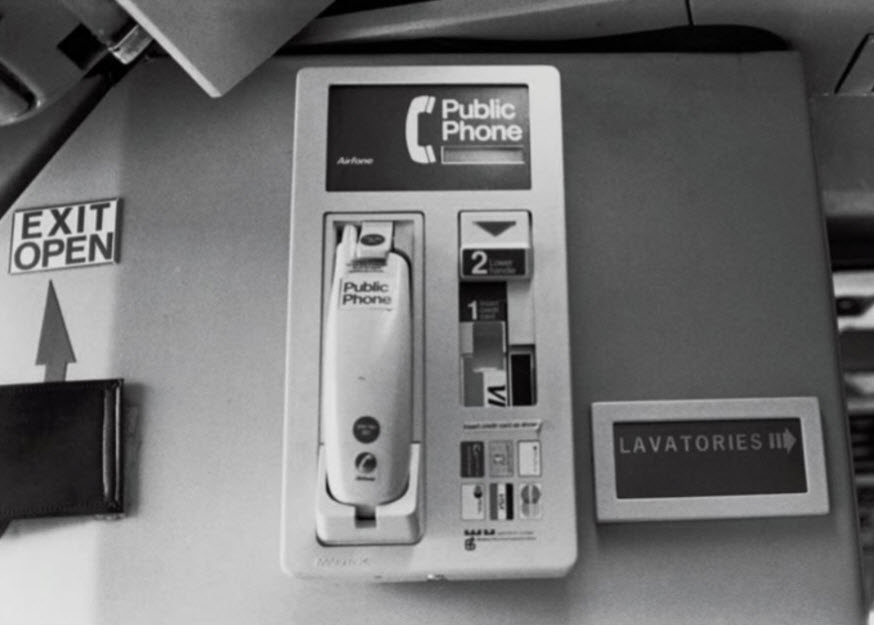
The Airfone first showed up on cabin bulkheads, before moving to passengers’ seats. Image: APEX Experience
Written for the APEX Experience magazine – Issue 8.1 – February/March 2018
There was a time when smartphones weren’t smart, and you still dialed a call. Connectivity meant that you knew how to hook up a turntable and a cassette deck to the stereo, and bandwidth was the size of the elastic in your sweat pants.
Then, in the 1980s, personal computers and mobile cellular phones disrupted the tech landscape, and airline passengers started seeing Airfone handsets in the cabin.
The pioneering air-to-ground telephony technology first appeared on cabin bulkheads. Passengers had to go to the Airfone unit, swipe a credit card and have it validated for payment, then take the handset back to their seat to make a call.
“Prior to that, the only individuals who were able to talk to anyone on the ground were the pilot and copilot,” says John Courtright, who managed United Airlines’ Airfone service as its in-flight entertainment and connectivity manager from 1978 to 1987.
About eight passengers in one of United’s planes over the continental U.S. could make a call simultaneously. Eventually, there was one handset per seat group in economy, and one per first or business class seat. But even Courtright admits the cost of a call was “ridiculously expensive,” at $2 or more per minute.
“We were targeting the business person who needed to communicate an urgent item or coordinate a meeting or travel arrangements,” he explains.
Some passengers used Airfone for the novelty of being able to make a quick airborne call and say, “Guess where I’m calling you from?” while others conducted lengthy conversations. “There were a number of individual calls that lasted 20, 30, or even 40 minutes, at three bucks a minute,” Courtright says.
With low passenger use and high capital and operational costs, the business case for Airfone was marginal. But as the service matured, applications were developed to create operational data communications links. “It was on a track to be cash-flow positive, combining equipment sales and a very nascent data network capability,” says Courtright, now director, sales and marketing for Structural Integrity Engineering.
But after flying on a host of airlines for years, the Airfone service faded away in the first decade of the 2000s, as cell phone availability and usage increased dramatically on the ground. Nonetheless, Courtright insists that he is “quite proud of the fact that I helped pioneer connectivity to passengers on airplanes.”